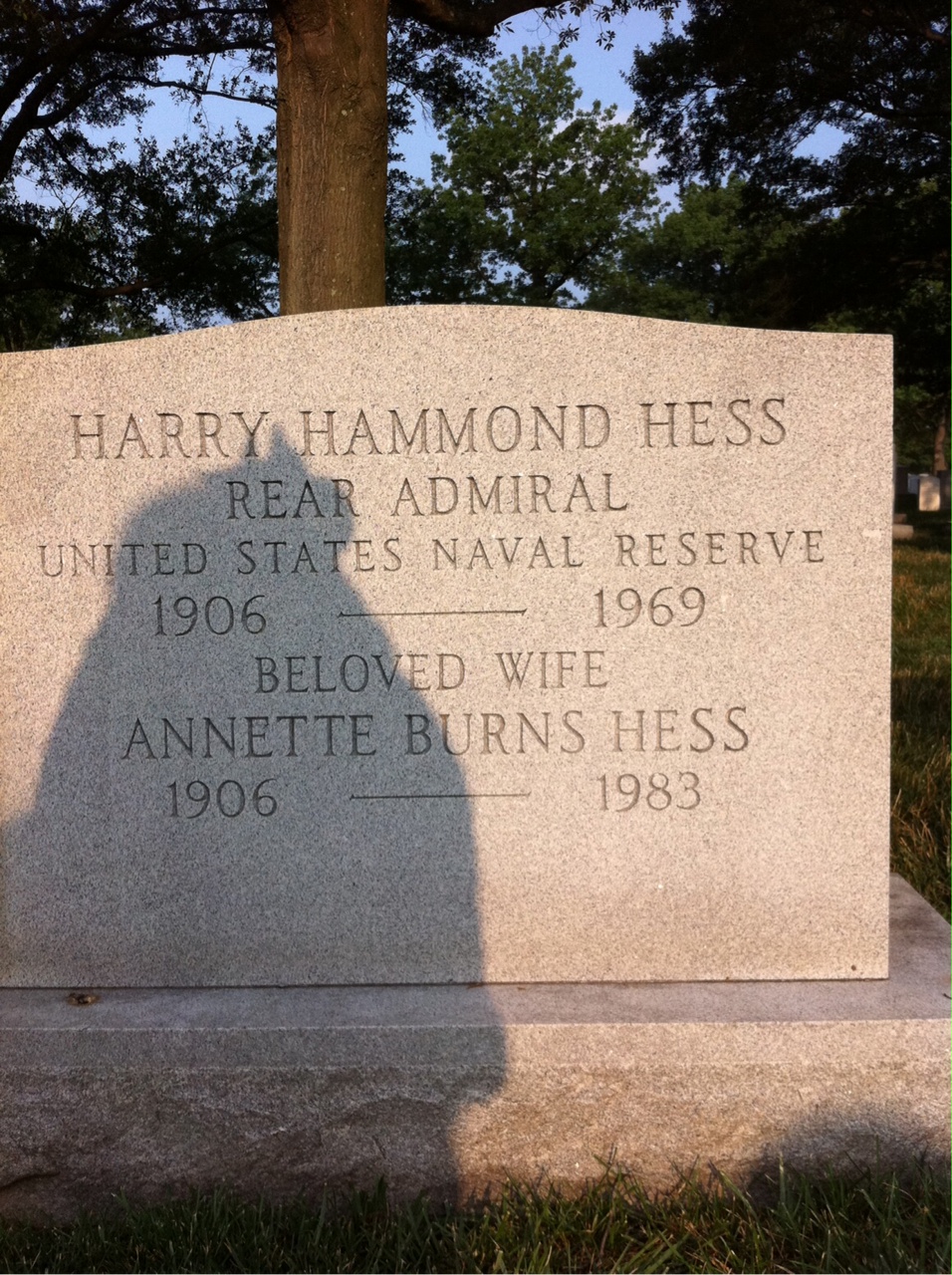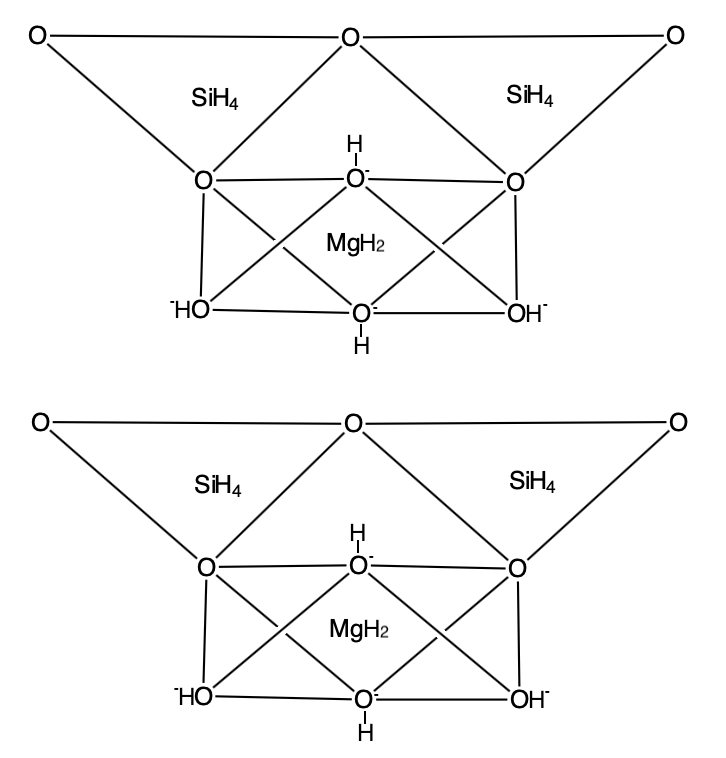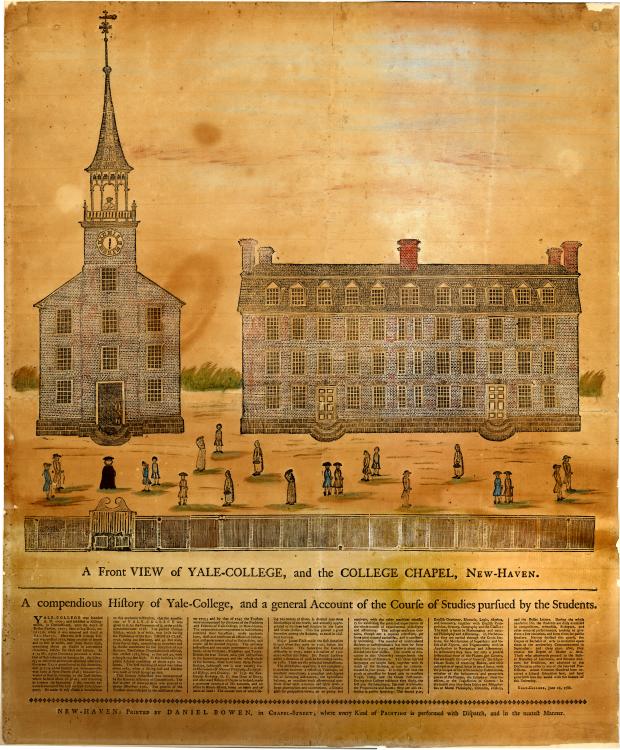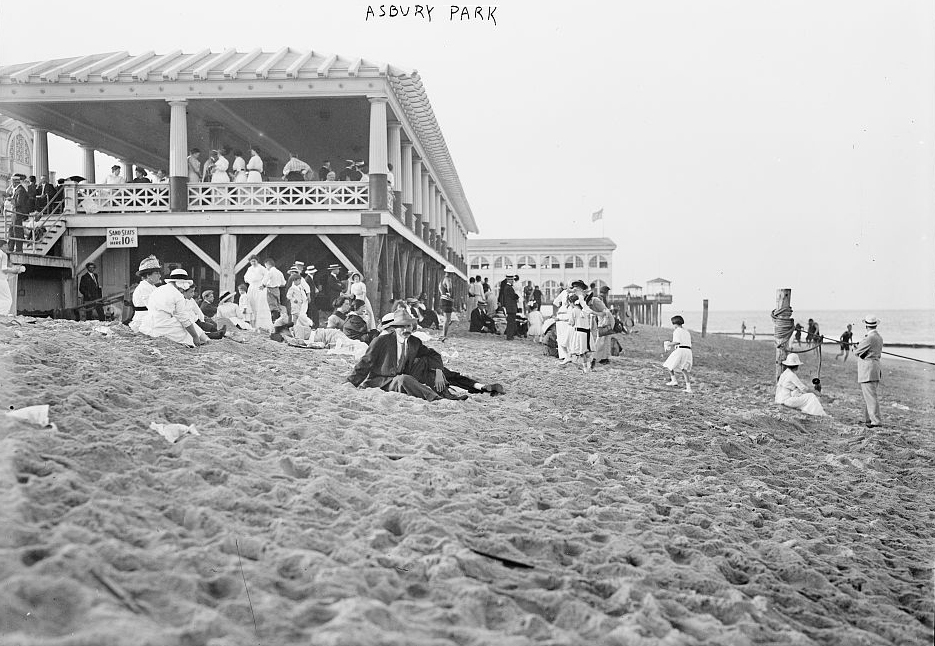|
Harry Hammond Hess
Harry Hammond Hess (May 24, 1906 – August 25, 1969) was an American geologist and a United States Navy officer in World War II who is considered one of the "founding fathers" of the unifying theory of plate tectonics. He published theories on sea floor spreading, specifically on relationships between island arcs, seafloor gravity anomalies, and serpentinized peridotite, suggesting that the convection in the Earth's mantle is the driving force behind this process. Early life and education Harry Hammond Hess was born on May 24, 1906, in New York City to Julian S. Hess, a member of the New York Stock Exchange, and Elizabeth Engel Hess. He attended Asbury Park High School in Asbury Park, New Jersey. In 1923, he entered Yale University, where he intended to study electrical engineering but ended up graduating with a Bachelor of Science degree in geology. Hess failed his first time taking mineralogy at Yale and was told he had no future in the field. Despite this, he continued wi ... [...More Info...] [...Related Items...] OR: [Wikipedia] [Google] [Baidu] |
New York City
New York, often called New York City (NYC), is the most populous city in the United States, located at the southern tip of New York State on one of the world's largest natural harbors. The city comprises five boroughs, each coextensive with a respective county. The city is the geographical and demographic center of both the Northeast megalopolis and the New York metropolitan area, the largest metropolitan area in the United States by both population and urban area. New York is a global center of finance and commerce, culture, technology, entertainment and media, academics, and scientific output, the arts and fashion, and, as home to the headquarters of the United Nations, international diplomacy. With an estimated population in 2024 of 8,478,072 distributed over , the city is the most densely populated major city in the United States. New York City has more than double the population of Los Angeles, the nation's second-most populous city. [...More Info...] [...Related Items...] OR: [Wikipedia] [Google] [Baidu] |
Serpentine Group
Serpentine subgroup (part of the kaolinite-serpentine group in the category of phyllosilicates) are greenish, brownish, or spotted minerals commonly found in serpentinite. They are used as a source of magnesium and asbestos, and as decorative stone. The name comes from the greenish color and smooth or scaly appearance from the Latin , meaning "snake-like". Serpentine subgroup is a set of common rock-forming hydrous magnesium iron phyllosilicate () minerals, resulting from the metamorphism of the minerals that are contained in mafic to ultramafic rocks. They may contain minor amounts of other elements including chromium, manganese, cobalt or nickel. In mineralogy and gemology, serpentine may refer to any of the 20 varieties belonging to the serpentine subgroup. Owing to admixture, these varieties are not always easy to individualize, and distinctions are not usually made. There are three important mineral polymorphs of serpentine: antigorite, lizardite and chrysotile. ... [...More Info...] [...Related Items...] OR: [Wikipedia] [Google] [Baidu] |
Geophysical Laboratory
The Carnegie Institution for Science, also known as Carnegie Science and the Carnegie Institution of Washington, is an organization established to fund and perform scientific research in the United States. This institution is headquartered in Washington, D.C. , the Institution's endowment was valued at $926.9 million. In 2018, the expenses for scientific programs and administration were $96.6 million. American astrophysicist John Mulchaey is the current president of the institution. Name More than 20 independent organizations were established through the philanthropy of Andrew Carnegie and feature his surname. In 2024, the "Carnegie Institution for Science" officially adopted the name "Carnegie Science", a name which has been used informally since 2007 when they first changed the name from "Carnegie Institution of Washington" to "Carnegie Institution for Science". History It is proposed to found in the city of Washington, an institution which ... shall in the broade ... [...More Info...] [...Related Items...] OR: [Wikipedia] [Google] [Baidu] |
New Jersey
New Jersey is a U.S. state, state located in both the Mid-Atlantic States, Mid-Atlantic and Northeastern United States, Northeastern regions of the United States. Located at the geographic hub of the urban area, heavily urbanized Northeast megalopolis, it is bordered to the northwest, north, and northeast by New York (state), New York State; on its east, southeast, and south by the Atlantic Ocean; on its west by the Delaware River and Pennsylvania; and on its southwest by Delaware Bay and Delaware. At , New Jersey is the List of U.S. states and territories by area, fifth-smallest state in land area. According to a 2024 United States Census Bureau, U.S. Census Bureau estimate, it is the List of U.S. states and territories by population, 11th-most populous state, with over 9.5 million residents, its highest estimated count ever. The state capital is Trenton, New Jersey, Trenton, and the state's most populous city is Newark, New Jersey, Newark. New Jersey is the only U.S. stat ... [...More Info...] [...Related Items...] OR: [Wikipedia] [Google] [Baidu] |
Rutgers University
Rutgers University ( ), officially Rutgers, The State University of New Jersey, is a Public university, public land-grant research university consisting of three campuses in New Jersey. Chartered in 1766, Rutgers was originally called Queen's College and was affiliated with the Reformed Church in America, Dutch Reformed Church. It is the eighth-oldest college in the United States, the second-oldest in New Jersey (after Princeton University), and one of nine colonial colleges that were chartered before the American Revolution.Stoeckel, Althea"Presidents, professors, and politics: the colonial colleges and the American revolution", ''Conspectus of History'' (1976) 1(3):45–56. In 1825, Queen's College was renamed Rutgers College in honor of Colonel Henry Rutgers, whose substantial gift to the school had stabilized its finances during a period of uncertainty. For most of its existence, Rutgers was a Private university, private liberal arts college. It has evolved into a Mixed-sex ... [...More Info...] [...Related Items...] OR: [Wikipedia] [Google] [Baidu] |
Henry William Menard
Henry William Menard (December 10, 1920 – February 9, 1986) was an American geologist. Life and career He earned a B.S. and M.S. from the California Institute of Technology in 1942 and 1947, having served in the South Pacific during World War II as a photo interpreter. In 1949, he completed a Ph.D. in marine geology at Harvard University. Menard is perhaps best known for his promotion of the theory of plate tectonics before it was widely accepted in the scientific community. Menard served many roles during his career as a marine geologist. Field worker, theorist, educator, popularizer, entrepreneur and statesman. Menard's historical and sociological writings are respected by historians of science. Menard began his professional career in 1949, in the Sea Floor Studies Section of San Diego's Navy Electronics Laboratory. He joined the Scripps Institution of Oceanography (SIO) in 1955 as associate professor of geology. Menard's field work was extensive, involving 1,000 aqua-lung ... [...More Info...] [...Related Items...] OR: [Wikipedia] [Google] [Baidu] |
Northern Rhodesia
Northern Rhodesia was a British protectorate in Southern Africa, now the independent country of Zambia. It was formed in 1911 by Amalgamation (politics), amalgamating the two earlier protectorates of Barotziland-North-Western Rhodesia and North-Eastern Rhodesia.''Commonwealth and Colonial Law'' by Kenneth Roberts-Wray, London, Stevens, 1966. p. 753 It was initially administered, as were the two earlier protectorates, by the British South Africa Company (BSAC), a chartered company, on behalf of the British Government. From 1924, it was administered by the British Government as a protectorate, under similar conditions to other British-administered protectorates, and the special provisions required when it was administered by BSAC were terminated.Northern Rhodesia Order in Council 1924 (SR&O 1924/324), S.R.O. & S.I. Rev VIII, 154 Although under the BSAC charter it had features of a charter colony, the BSAC's treaties with local rulers, and British legislation, gave it the status of ... [...More Info...] [...Related Items...] OR: [Wikipedia] [Google] [Baidu] |
Bachelor Of Science
A Bachelor of Science (BS, BSc, B.S., B.Sc., SB, or ScB; from the Latin ') is a bachelor's degree that is awarded for programs that generally last three to five years. The first university to admit a student to the degree of Bachelor of Science was the University of London in 1860. In the United States, the Lawrence Scientific School first conferred the degree in 1851, followed by the University of Michigan in 1855. Nathaniel Shaler, who was Harvard's Dean of Sciences, wrote in a private letter that "the degree of Bachelor of Science came to be introduced into our system through the influence of Louis Agassiz, who had much to do in shaping the plans of this School." Whether Bachelor of Science or Bachelor of Arts degrees are awarded in particular subjects varies between universities. For example, an economics student may graduate as a Bachelor of Arts in one university but as a Bachelor of Science in another, and occasionally, both options are offered. Some universities follo ... [...More Info...] [...Related Items...] OR: [Wikipedia] [Google] [Baidu] |
Electrical Engineering
Electrical engineering is an engineering discipline concerned with the study, design, and application of equipment, devices, and systems that use electricity, electronics, and electromagnetism. It emerged as an identifiable occupation in the latter half of the 19th century after the commercialization of the electric telegraph, the telephone, and electrical power generation, distribution, and use. Electrical engineering is divided into a wide range of different fields, including computer engineering, systems engineering, power engineering, telecommunications, radio-frequency engineering, signal processing, instrumentation, photovoltaic cells, electronics, and optics and photonics. Many of these disciplines overlap with other engineering branches, spanning a huge number of specializations including hardware engineering, power electronics, Electromagnetism, electromagnetics and waves, microwave engineering, nanotechnology, electrochemistry, renewable energies, mechatronics/control ... [...More Info...] [...Related Items...] OR: [Wikipedia] [Google] [Baidu] |
Yale University
Yale University is a Private university, private Ivy League research university in New Haven, Connecticut, United States. Founded in 1701, Yale is the List of Colonial Colleges, third-oldest institution of higher education in the United States, and one of the nine colonial colleges chartered before the American Revolution. Yale was established as the Collegiate School in 1701 by Congregationalism in the United States, Congregationalist clergy of the Connecticut Colony. Originally restricted to instructing ministers in theology and sacred languages, the school's curriculum expanded, incorporating humanities and sciences by the time of the American Revolution. In the 19th century, the college expanded into graduate and professional instruction, awarding the first Doctor of Philosophy, PhD in the United States in 1861 and organizing as a university in 1887. Yale's faculty and student populations grew rapidly after 1890 due to the expansion of the physical campus and its scientif ... [...More Info...] [...Related Items...] OR: [Wikipedia] [Google] [Baidu] |
Asbury Park, New Jersey
Asbury Park () is a beachfront city located on the Jersey Shore in Monmouth County in the U.S. state of New Jersey. It is part of the New York metropolitan area. As of the 2020 United States census, the city's population was 15,188, a decrease of 928 (−5.8%) from the 2010 census count of 16,116, which in turn reflected a decline of 814 (−4.8%) from the 16,930 counted in the 2000 census. In 2022, Asbury Park's beach was named one of the best in the world by ''Money'' and one of the best in the country by '' Travel + Leisure''. Asbury Park was originally incorporated as a borough by an act of the New Jersey Legislature on March 26, 1874, from portions of Ocean Township. The borough was reincorporated on February 28, 1893. Asbury Park was incorporated as a city, its current type of government, as of March 25, 1897.Snyder, John P''The Story of New Jersey's Civil Boundaries: 1606–1968'' Bureau of Geology and Topography; Trenton, New Jersey; 1969. p. 177. Accessed Feb ... [...More Info...] [...Related Items...] OR: [Wikipedia] [Google] [Baidu] |
Asbury Park High School
Asbury Park High School is a comprehensive, community public high school serving students in seventh through twelfth grades. It is in a landmark building in Asbury Park, in Monmouth County, in the U.S. state of New Jersey, that was constructed during the New Deal as a model high school campus. It is part of the Asbury Park Public Schools, an Abbott District serving children in pre-kindergarten through twelfth grade. The current school building opened to students in September 1926. As of the 2023–24 school year, the school had an enrollment of 370 students and 36.0 classroom teachers (on an FTE basis), for a student–teacher ratio of 10.3:1. There were 147 students (39.7% of enrollment) eligible for free lunch and none eligible for reduced-cost lunch.School data ... [...More Info...] [...Related Items...] OR: [Wikipedia] [Google] [Baidu] |






